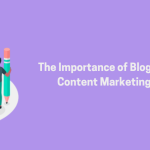Table Of Content
- 1 Link Acquisition – The Right Mindset
- 2 Link Acquisition – Key Considerations
- 3 Top 7 Link Acquisition Strategies
- 4 What is A Resource Page And Why Does It Count?
- 5 How To Craft A Link Acquisition Strategy?
- 6 How To Write The Perfect Outreach Pitch?
- 7 How To Make The Best Niche Edits For Link Insertions?
SEO is in constant flux. With Google rolling out new updates every year, online content creators and businesses face extreme anxiety about the outcomes and impacts of these changes on their online presence.
However, when you have the right and legitimate strategy at play, you can avoid the potential pitfalls caused due to Google algorithm updates or any other change.
If you’re reading this article, I’d assume you to be someone looking for a way to mend your metrics and figure out a way to find high-quality link sources.
We have received a flurry of messages from people asking us about what link acquisition strategy can work for their profiles.
Hence, today, we’ll talk all about it. We’ll answer all these queries and help you design a backlink acquisition strategy that will fit your plan and help you pull up your metrics with a long-term assurance.
Link Acquisition – The Right Mindset

As we know link acquisition, the process of getting links to your websites from popular websites, isn’t as easy as it sounds. Creating backlinks on traffic-heavy websites often blurs the line between black hat and white hat SEO.
Nevertheless, if you have a farsighted mindset, you can always make this work for you.
In that light, a link acquisition strategy such as exchanging backlinks can never account for long-term success. Google is not a great supporter of the mindset ‘you link to me, and I will link to you’. Doing so, you always run the risk of losing your backlinks with the very next update.
Hence, it is important to shift the focus from just acquiring links to cultivating a link-worthy brand. Once you build your website’s authority and trust through helpful content creation, you can naturally attract backlink opportunities.
But that’s no news for most of you. Everyone knows and understands the importance of quality content, and neither is our guide about how to create high-quality content.
Here, we will help you understand how to use your content in a way that attracts backlinks naturally and where and how you should approach high-quality websites for these backlinks so that you can avoid penalties.
Link Acquisition – Key Considerations
Lastly, before we start talking about link acquisition strategies, here are a few approaches you can consider:
(i) Niche Down: Gone are the days of multicategory blogs. Now, you must acquire links that work best for your industry or niche. This allows you to build your authority in the eyes of Google.
(ii) Ethical link acquisition in the age of algorithms: Consider the importance of building high-quality, natural links – ignore black-hat SEO tactics. Focus on strategies that prioritize creating valuable content and building relationships with other websites.
(iii) The future of link acquisition: Stay informed about advancements in search engine algorithms. Anticipate how it might impact link acquisition strategies.
(iv) Anatomy of a High-Authority Backlink: A good link is topically relevant, authoritative, provides value and looks natural.
Relevance:
Building a link acquisition strategy with irrelevant links will never show you any positive results. Even if it’s a struggle, stick to only relevant links. Irrelevant links, in the long run, confuse search engine algorithms and hinder the development of your website’s authority.
Authoritative:
Obtain links from well-known (established websites). The search engine considers it an endorsement. In turn, your website’s authority also gets a boost.
Valuable:
Links should be valuable enough to add an optimum user experience. If you are publishing content on fellow sites, aim for long-form content (Because they tend to rank higher).
Natural:
There’s nothing like a natural link acquisition strategy! An unnatural link, be it the strategy or relevance, will always run the risk of hitting penalties and will make your website’s authority unreliably weak. Thus, it’s important that you follow some norms for your backlinking strategy:
- The link should not disrupt the flow of the content.
- The link should not look forceful.
- Instead, place it so that it appears as a necessity. It’s like the search engine saying, “The link placement is correct. It was needed here to add more context”.
- A natural anchor text.
Top 7 Link Acquisition Strategies
Here, we will talk about the following strategies:
- Guest posting
- E-E-A-T-compliant linkable assets
- Partnering with a link-building agency
- Spy on Your Competitor’s Backlink Profile + Skyscraper Technique
- Unlinked Mentions
- Resource page link-building
- Link Insertions
1. Guest Posting
According to AuthorityHacker, guest posting is the most popular link acquisition tactic.

And there is no denial of this fact. In fact, it is a link acquisition strategy involving less risk or even zero risk (if done correctly).
Basically, guest posting is when you write and post your content on popular websites and get a link back to your website.
Why does it matter?
When the algorithm sees that you are getting featured on popular websites and getting backlinks from them, it also considers you an authority. This improved authority results in boosted brand awareness, higher ranking for targeted keywords, and more traffic. Consequently, you have more leads and higher chances to convert them.
Process
Firstly, the process starts with link prospecting…
Create a list of websites from which you want to obtain links. Finding authoritative (high DA, DR, and traffic) and relevant websites is the key here.
After you find those websites, it’s time to add them to an Excel sheet. Then, start strategic outreach. Here, the art is to tactfully convince them to accept your guest posts. Thus, the outreach email is super important. Remember, generic emails don’t work in a link acquisition strategy. Thus, you must plan your emails in a way that offers a solution and gives the publisher a reason to read it till the end and to act accordingly.
Key Considerations
- First, don’t approach irrelevant websites (We have already mentioned this; it’s just a gentle reminder).
- Secondly, before you send the outreach email, thoroughly evaluate the website. Look for the scope of improvements and think about how you can benefit their audience.
- Thirdly, read the guest posting guidelines (of the publisher’s website) carefully.
- On top of everything, focus on creating original content that will actually rank. When you write, keep the tone and style of the publisher’s website in mind. This is why the previous point is so important.
DISCLAIMER: It is difficult to discuss guest posting under a single point. We have a 3200+ word article on this. If you REALLY want to know the ins and outs of guest posting, we suggest you read our complete guide to guest posting.
2. Create E-E-A-T Compliant Linkable Assets That Naturally Attract Links
Simply put, linkable assets are such high-quality content that people find really helpful and worth linking to.
Remember, we have shared a graph in the guest posting section. WHY? The data helped us to substantiate our content. Interestingly, that was a linkable asset.
Types of Linkable Assets
We have already mentioned one of the types. Yes, the above was an example of a statistical roundup post.
Another type can be resources and guides. This is where you share an in-depth analysis of a topic. Here is an example of the same:

In this guide, Ahrefs broke down the topic into seven subtopics and shared a thorough coverage of each subject:

Next comes free tools. Through this linkable asset, people solve a problem and garner backlinks. For instance, you can consider the free keyword generator by Ahref:

Result? This tool has attracted around 7.7K backlinks because people refer to it while discussing free keyword research tools:

Additionally, the next type of linkable asset is listicles. As the name suggests, a listicle is a compilation of lists related to a specific topic. Below is an example of a listicle on “100 Ways To Make Money Without a 9-to-5”. This article is ranked at the top spot. Consequently, it has garnered an ample amount of backlinks.

Nevertheless, the question remains how to make your linkable assets E-E-A-T compliant. This is one of the most important aspects of authority link building.
For this, you need to craft your linkable assets around questions people ask. Creating such content requires first-hand knowledge, an aspect that makes you more unique than others.
Also, infuse your personal touch into the content. Make it unique and original.
3. Choose A Reputable (and Trustable) Link Building Agency
Paid links are very common link acquisition channels. In fact, 46% of marketers spend $10,000+ years on link building.
And when it comes to paid link building, they prefer to work with agencies:

(Source)
It is important to note that one reason for this over-reliance is that they have experienced professionals. Precisely, 59.49% of agency professionals hold 5+ years of experience.

(Source)
So, how do you choose the right link building agency for your link acquisition strategy? Here are some boxes you must check:
- Ask the agency to share their past works and the impact they created with their link acquisition strategy.
- How long have they been working in this field?
- Set a line for clear communication about your needs and the quality of websites the agency holds.
- Go for the ones with faster turnaround times.
- Look for service providers who offer competitive prices.
- Select agencies that use ethical (white hat) practices and are skilled in making paid links appear organic.
4. Spy Your Competitor’s Backlink Profile + Skyscraper Technique
To analyze your competitor’s backlinks, you need to leverage tools. If you want to do it for free, you can use Ahref’s free backlink checker tool. But it is limited to 100 backlinks.
On the other hand, if your link acquisition strategy needs you to monitor unlimited backlinks, simply switch to the paid plan.
Now, we are assuming that you have the list with you. So, how can you get links from similar sources?
Enter the skyscraper technique:
- Identify the content that has received the highest number of backlinks.
- Then, research and ideate to create an even better version of it.
- Finally, reach out to the websites from where your competitor received the links. Clearly tell them why your content is better, and why they should link to your content.
5. Unlinked Mentions
Unlinked mentions are something you cannot afford as it would mean a missed chance to get a natural backlink. In these cases, people mention you without linking to you.
But if that mention is from a reputable source, you can’t afford to miss that. Now the question is, how could you grab those missed opportunities?
Well, before that, knowing the types of unlinked mentions is important for ensuring creativity.
Generally, unlinked mentions are divided into:
Brand mentions, product mentions, personal mentions, content mentions, event mentions, industry mentions, social media mentions, and location mentions.

Does Google love unlinked mentions? How to find those unlinked mentions and utilize them? Is there any tool that can help you with this?
Probably, you have a lot of questions like this. Fear not. Check out our guide:
6. Resource Page Link Building
Resource page link building is easier and grows with you, unlike other strategies. It’s perfect for snagging top-notch backlinks in your area. Just remember, knowing why these links matter and using them right is the trick.
What is A Resource Page And Why Does It Count?
Resource pages are sets of helpful tools, articles, or content selected for the audience of a site. It is not merely that your content is featured, but also how well it aligns with necessary resources appreciated by readers and search engines.
That’s why creators are glad to take content suggestions. Participating via forms, emails, or direct channels indicates that you wish to contribute value rather than spam, and hence are believable to the curator.
How To Craft A Link Acquisition Strategy?
Link building via resource pages can be conceptualised into three main phases:
Step 1: Scouting For Opportunities
Leverage Google’s advanced search operators — such as “keyword + resources” — to uncover potential resource pages in your niche. For more thorough searches, consider utilizing scraping tools such as Scrapebox or Citation Labs Link Prospector. These tools can scrape the web for relevant leads, providing you with bulk prospects.
Step 2: Filtering And Vetting
With a list of potential resource pages at hand, you can now start the screening process. Use a mix of metrics-based filtering and manual review to ensure that the remaining candidates align with your niche and maintain a certain quality standard.
However, remember the goal here. You’re not just trying to amass as many links as possible but to cultivate a selection of high-value, relevant links to help push your website’s authority.
Step 3: Reaching Out
The final step involves contacting the site’s owner or content curator and adding a personal touch to your message. Explain the benefits of your resource and why it’s valuable to their audience. Also, mention any broken links on their page to help out. Always be respectful and professional, aiming for a win-win linking opportunity.
How To Write The Perfect Outreach Pitch?
Crafting an effective outreach email is truly an art. Personalisation is crucial. Always address the recipient by name, if possible, and draw them in with a relevant and attention-grabbing subject line. Moreover, clearly and concisely communicate the value your resource adds.
This means you should chat about how it adds to what’s already there on the page, and spill all the details needed to include it, like a short description, a snappy title, and the link to the resource you’re thinking of.
Super important: make sure your email is friendly, polished, and shows you value the recipient’s time and focus.
7. Link Insertions (Niche Edits)
In the huge, often puzzling world of SEO, there’s a handy technique that doesn’t get enough spotlight – niche edits, or simply adding links to existing content. This approach, which involves smartly placing backlinks in relevant places, needs a bit of skill and a good grasp of your online world.
Niche edits are great because they fit into an article smoothly, without sticking out or disrupting the flow. When done right, they add value to the content while also giving your stuff a quiet shout-out.
Picking the right articles to add your links to is key. When you insert your backlink into a piece that’s both relevant and respected, it’s like getting a credibility boost from the article’s good reputation, making both search engines and readers see you in a better light.
How To Make The Best Niche Edits For Link Insertions?
Getting good at niche edits is all about being smart and respectful to keep your link insertion strategy clean.
The first thing you must keep in mind is the anchor text. These are the words you’re turning into a link. This word or phrase must fit smoothly into the host’s article, like they were always meant to be there. At the same time, it must gently nudge readers towards your site.
This is all about good hold in language and understanding both your business as well as the host website.
Sometimes, the best way to secure your spot is by contributing something of your own. If you can add a couple of your insights that beef up the host’s work, it’s a win-win. The article gets better, and you get your link in a way that feels organic.
And let’s not forget about reaching out. That first message you send is crucial. It’s your chance to make a good impression. You’ve got to show you genuinely like what they’re doing, explain why your link deserves to be there, and highlight what’s in it for them. It’s all about striking that perfect balance of politeness, persuasion, and partnership.
So, there you have it. Master these steps, and you’ll be all set to ace those niche edits.
Remember, when we’re exploring niche edits, it’s important to remember that relevance, balance, and coherence are incredibly important. Remember, these elements are like your best buddies in this process.






